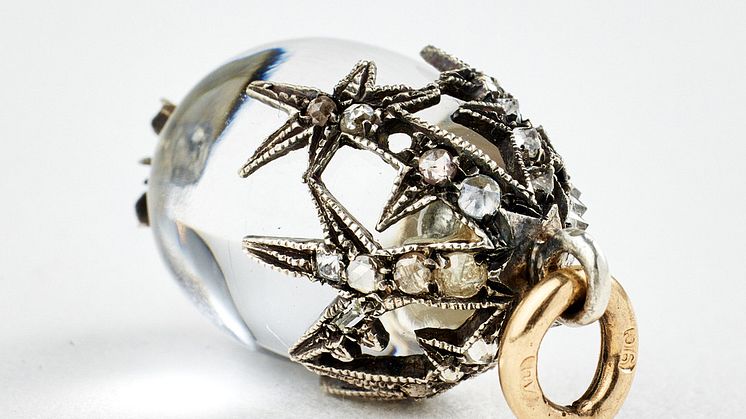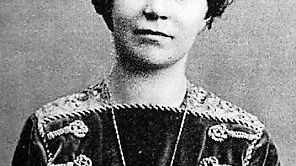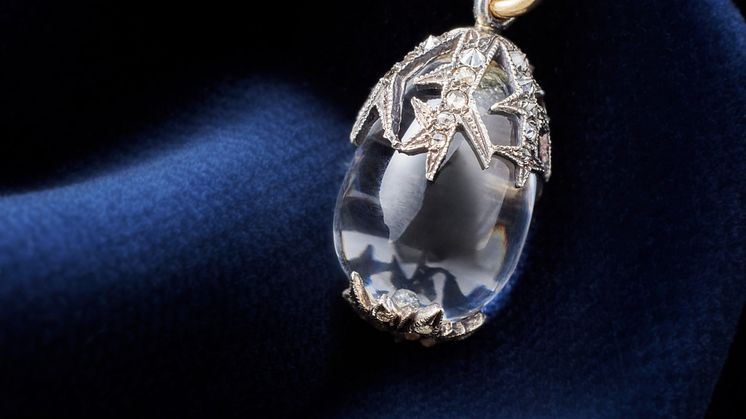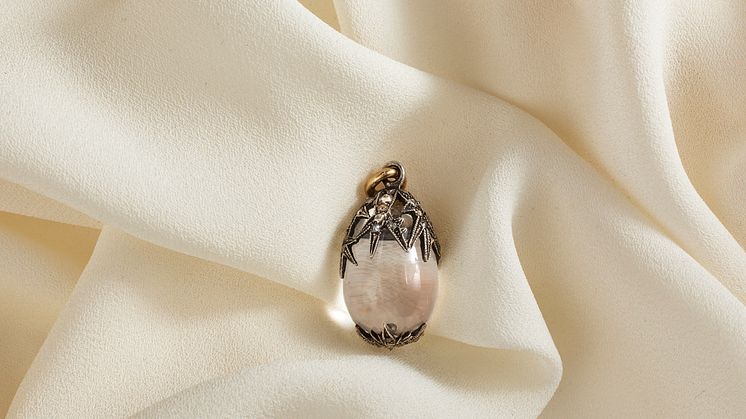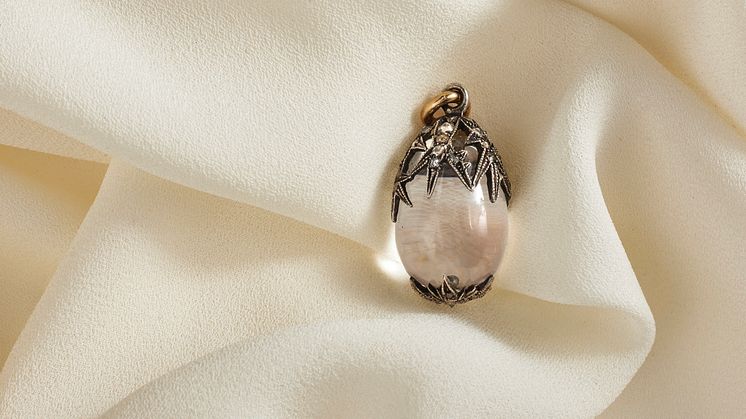
Press release -
Rare Fabergé Winter Egg by hidden gem Alma Pihl up for auction at Stockholms Auktionsverk
Among the jewellery in this spring's Fine Art & Antiques at Stockholms Auktionsverk is a particularly rare treasure. This irresistible little Winter Egg pendant by Fabergé is a tribute to the Nordic winter. The pendant was made by master craftsman Albert Holmström for Fabergé around 1913-1914 from sketches by Holmström's then 23-year-old apprentice and niece Alma Pihl.
Today, Alma Pihl is one of our most celebrated jewellery designers. Still, despite being the consignor of some of Imperial Russia's most famous treasures, she was almost entirely unknown until 20 years ago. Then, like many other Finnish-Swedish masters, she fled the Russian Revolution to live a quiet life as a drawing teacher in the small mill town of Kuusankoski in Finland. But before that, in 1888, she was born in Moscow with an obvious goldsmith's gene. Alma was the granddaughter of August Holmström - Fabergé's master craftsman in St Petersburg - and the daughter of Fanny Holmström and Oscar Pihl - Fabergé's master craftsman in Moscow - and thus the niece of Albert Holmström, who took over her father's title in 1904.
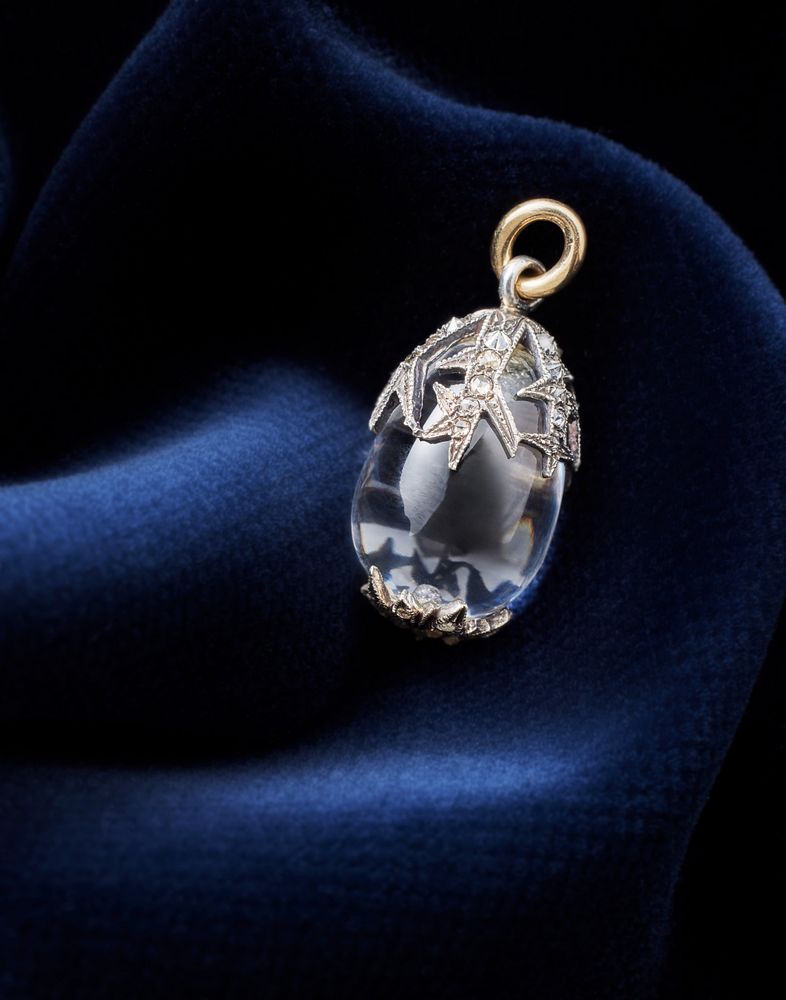
The Winter Egg's journey began in 1911 when Fabergé's customer, Dr. Emanuel Nobel, head of the Nobel oil empire in Russia and Alfred Nobel's nephew, ordered 40 small pieces of jewellery. With the specification that the design idea had to be original and the jewellery made of precious materials - but not so precious that the recipients could perceive them as bribes.
Inspired by the delicate frost flowers on the window above her desk, young artist Alma Pihl sketched six different brooches in the shape of radiant ice crystals. The symbolism was ideally suited for diplomatic gifts from Russia's sparkling winter landscape. The jewellery was a success, and after the brooches, a long series of ice flowers in various guises followed: necklaces, bracelets, pendants and charms. They were given as gifts at banquets for Nobel's female guests and often hidden as a surprise in the cover of the white linen napkin. Dr. Emanuel Nobel was so pleased with the wintry theme of Alma Pihl's jewellery that he asked to put a monopoly on it. Peter Carl Fabergé made the counter-demand for one exception, to use the theme for one of the imperial Easter eggs. The result was the famous Winter Egg, which Tsar Nicholas II of Russia gave to his mother as a gift in 1913, followed by the Mosaic Egg by Alma Pihl the following year. As a designer for Fabergé, 1911-1917, Alma Pihl designed almost 2,000 jewellery pieces.
"The honour of selling one of Alma Pihl's high-quality works is rare; if you look at recent years alone, only nine items attributed to Alma Pihl have sold at auction since 1994. Historically speaking, it is very rare that the designer Alma Pihl is even mentioned; most often, it is her uncle Albert Holmström who is talked about. In fact, she didn't appear on the market until the 1970s when Ulla Tillander-Godenhielm found her sketches," explains Sandra Johansson, gemologist and jewellery specialist at Stockholms Auktionsverk.
Ulla Tillander-Godenhielm is an art historian, jewellery expert, and specialist in Peter Carl Fabergé's work. She is also the daughter of court jeweller Herbert Tillander and grew up in a family of jewellers whose business is now in its fourth generation. Her great-grandfather started his business in imperial St Petersburg. He was one of the many Finnish-Swedish masters who fled Russia after the outbreak of the revolution, only to form their own community back home in Finland.
"Two of Alma Pihl's brothers worked with us all their lives. Oskar Pihl was our designer until he died in 1959, and afterwards, I couldn't help wondering whether Alma might have given him a helping hand sometimes. He was an extremely skilful designer, but some items are particularly reminiscent of her designs. But all the families – Pihl, Holmström, Bohlin and Tillander – spent time together at christenings, weddings, parties and funerals. It was a context that provided great security for all of us and a circle where we took care of each other," says Ulla Tillander-Godenhielm.
"I was just a little girl when I first came into contact with Alma Pihl. She often came to visit us, but at the time, I knew nothing about her or what she had done. However, I was very interested in that period in St Petersburg, which felt almost enchantingly magical to me."
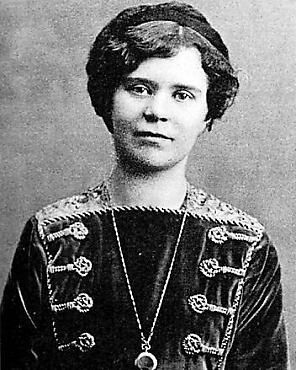
After fleeing from St Petersburg, Alma Pihl's husband, Nikolai Klee, found work at the Kymi Mill in Kuusankoski, and she found employment as a drawing teacher at the small Swedish-language mill school in town, where she was very popular with her pupils. However, many wondered how and where she had learned her artistic skills because she did not talk about her merits as a jewellery designer at Fabergé. Much later, her curious niece opened the door to Alma Pihl's story after sitting at her aunt's feet and persistently asking about the St Petersburg years. It is through her that Ulla Tillander-Godenhielm gained such good insight into 'Aunt Alma's' life, and since then, she has made sure that posterity also knows about Alma Pihl's history and deeds. Although she never felt the need to tell the world how she had redrawn the map of imperial jewellery design.
"Russian jewellery art was very ostentatious at the time, but Alma Pihl's design language gravitates more towards Art Deco, with a more delicate and youthful feel. The raw material in this piece of jewellery has little value today; the value lies in the craftsmanship of the Fabergé atelier and Alma Pihl's qualities as a designer. These sought-after jewellery pieces are scarce; very few have been preserved for posterity. This winter egg also has a double provenance because the client belonged to the Nobel family; in my world, it hardly gets better than this," says Sandra Johansson.
The Winter Egg pendant in platinum silver with diamonds and rock crystal will be auctioned at Stockholms Auktionsverk Fine Art & Antiques on June 12th. Available for showing at Nybrogatan 32 in Stockholm between June 4th and 10th.
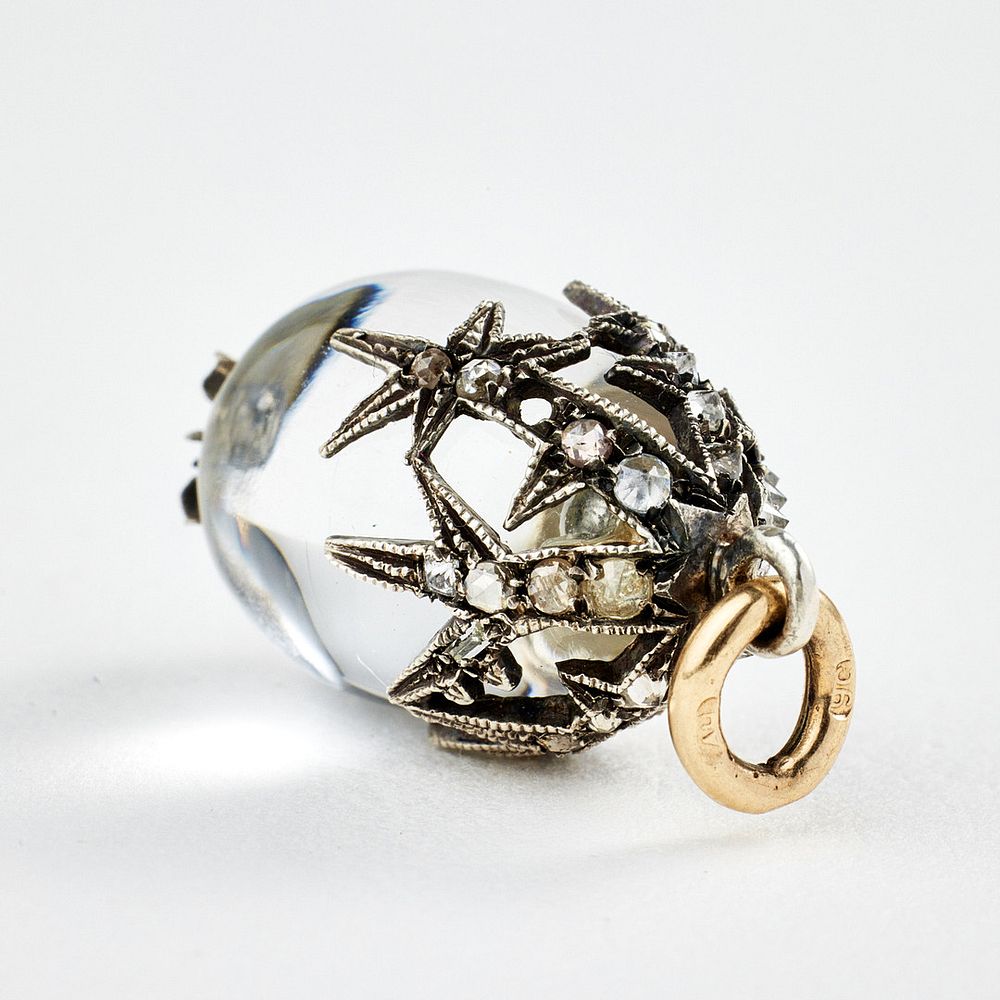
Topics
Categories
Stockholm's Auktionsverk is the world's oldest auction house – founded in 1674 on the initiative of Baron Claes Rålamb, then appointed Governor of Stockholm. Today, Stockholm's Auktionsverk is the largest auction house in Northern Europe – specializing in art, design, crafts, antiques, and books. With ten branches in Sweden, Finland, and Germany, over 60 experienced and knowledgeable specialists and more than 700,000 registered buyers in 180 countries. After 350 years of operation, the auction house continuously takes great pride in being a trading floor for Swedish and international cultural history.
Stockholms Auktionsverk


